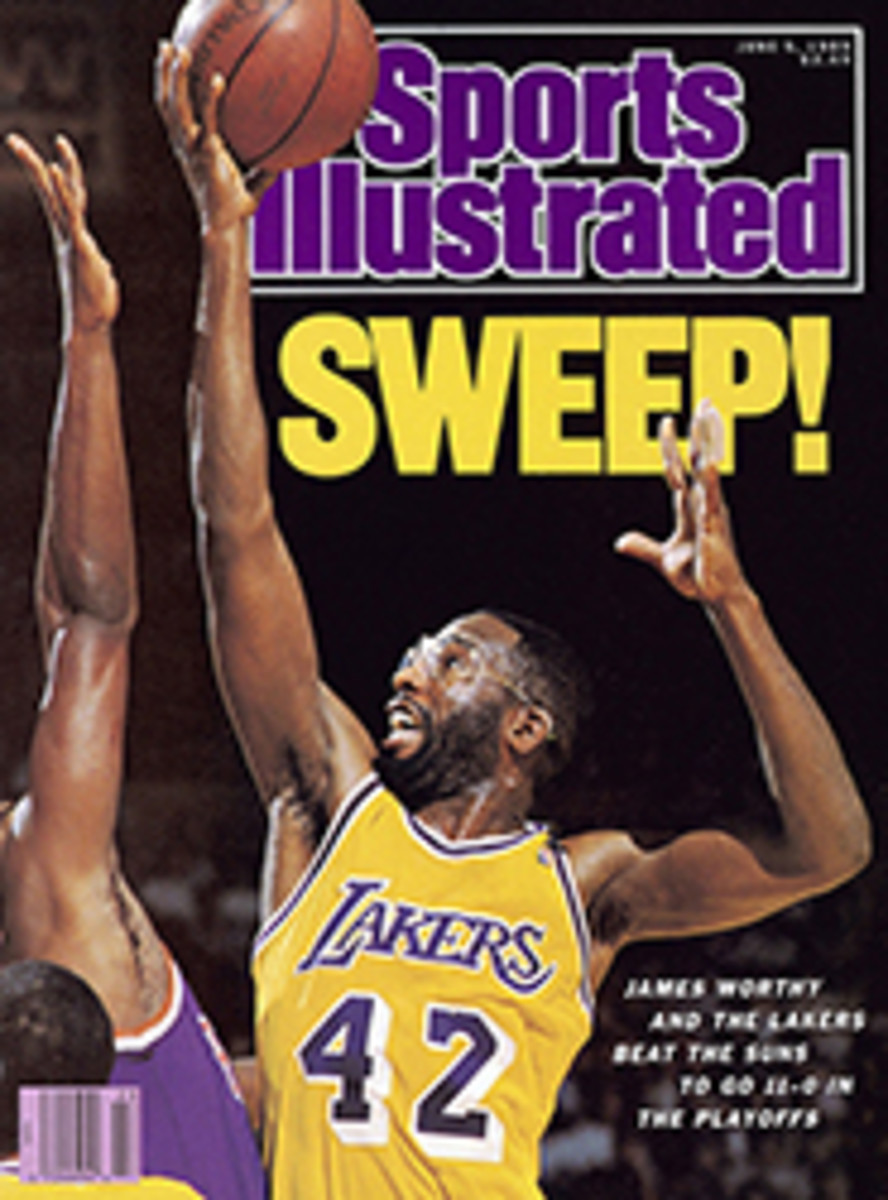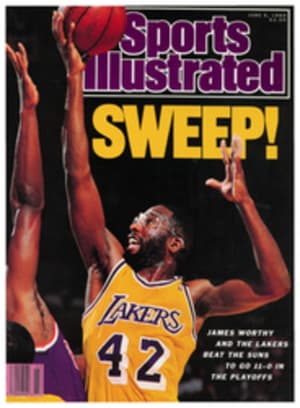
A BUMPER-CAR INDY
It might not have been the closest finish in Indianapolis 500 history, but the argument can be made that it was the most thrilling. And for a few moments after the climax—which actually occurred 1½ laps before the checkered flag waved—it appeared that the race might be the most controversial. But as 400,000 fans at the Indianapolis Motor Speedway stood, stunned by what had happened, Al Unser Jr., coinstigator of all the excitement, calmly walked away from the debris of a 200-mph crash and shook them up some more. Standing at trackside, not far from his smashed and smoking race car, he applauded the driver who had just put him into the wall. "I was trying to say to him, "Damn, you're impressive,' " Unser said.
Emerson Fittipaldi of Brazil, a two-time world champion on the Formula One circuit, was the winner of both the high-speed tangle in Turn 3 and the 1989 Indy 500. Unser Jr., the kid born with a throttle under his foot, was the big loser—make that the big second-place finisher, even though he finished without a car. Unser probably saved the affair from escalating into endless controversy by displaying the attitude ingrained in the genes of his famous family and reinforced during a life of hanging around the tough tracks. That attitude says: You can't blame a racer for not backing off.
From the green flag, Fittipaldi showed he had the 33-car field covered with his Penske-Chevy, which he had named The Flying Beauty. Starting from the outside of the first row, he led for 156 of the first 195 laps of the 200-lap race, and along the way, he set a single-lap record of 221.370 mph. Little Al—as Unser Jr. is called to distinguish him from his dad, Al Sr., a four-time Indy winner—had started in the middle of the third row, moved up to third within the first 75 miles, then bided his time until he could make a final charge.
The finish was a heart-thumper. A caution period ended on Lap 187 with Fittipaldi holding a seemingly comfortable lead of 1.8 seconds—about 200 yards—over Unser, but the chase was just beginning. Running 216-mph laps, Unser closed the gap to .2 of a second on Lap 196; then, ducking his Lola-Chevy under Fittipaldi's Penske-Chevy as they sped down the backstraight and into Turn 3, Unser grabbed the lead and held it for the next three laps. With a lap and a half left in the race, Unser came up on a slower car as they entered Turn 2, giving Fittipaldi a chance to get to the inside. As they roared again down the back straight, bearing down on the car of rookie Johnny Jones, Fittipaldi hung on, still inside. The three cars went into Turn 3 in that formation, and, according to both Unser and Fittipaldi, the result was inevitable.
"In racing there's a time you don't think about life, you don't think about money, you don't think about anything but winning," said Unser. "And winning means everything to me in my life. When I was entering Turn 3 on the second-to-last lap, all that mattered to me was that I come out first. I'm sure Emmo felt the same way. This is the biggest race in the world, and this was its last couple of laps. I wasn't going to lift. Neither was he. There was only one car going to come out of it...and it was Emmo's."
Echoed Fittipaldi: "When you get two race drivers who want the Indy 500 as bad as we did and they go into corner, only one is going to come out."
Fittipaldi's right front tire touched Unser's left rear. Instantly Unser's Lola spun around and slammed into the wall almost backward. After the car came to a halt Unser scrambled out unhurt. As the field, under the yellow caution flag, trailed the pace car to the finish, he paid his respects to Fittipaldi with applause.
It was a generous gesture. Unser had had the lead and the racing line going into the turn; Fittipaldi could have prevented contact by backing off the throttle. Lifting. Unser accepted that Fittipaldi wouldn't back off.
For Fittipaldi, a cosmopolitan man who speaks five languages, this win was the culmination of the third stage of his career. In 1972, when he was 25, he became the youngest driver to win the world championship. He won the Formula One title again in 1974. But in 1975 he formed his own team; it failed after six years, having cost him millions of his own dollars, and a marriage. In 1982-83 he retired to Brazil to concentrate on running his Mercedes dealership and fruit plantation. "Farming is not very exciting, but it's steady, and the land is always there," he says. He quickly recouped much of his fortune and in 1984 made his comeback in racing. The following year, oilman U.E. (Pat) Patrick hired him to drive Indy cars. During the Indy Car season, Fittipaldi now lives in Miami Beach with his second wife, Teresa, and four children. Back in Brazil, where the Indy 500 could be followed on television, they might have to declare a second carneval. Finishing third, six laps behind Fittipaldi, was Raul Boesel, another Brazilian.
This Indy 500 began with the fastest field in motor racing history; the average qualifying speed was an astounding 216.588 mph. Rick Mears, in his Penske-Chevy, held the pole with a record 223.885 mph. Still, it was no real surprise when Fittipaldi took off at the start, nor that coming on strong from the second row was former Indy winner and '78 world champion Mario Andretti, driving a Lola-Chevy: Emmo and Mario are still two hungry drivers.
On the third lap, Kevin Cogan hit the outside wall coming out of Turn 4. His March-Cosworth ricocheted across the track into the inner wall of pit row, broke into pieces—as Indy Cars are designed to do to absorb impact—then shot to the outer pit wall and back again to the inner wall, the engine sliding to a stop beside Cogan's head. It was a scary crash, but Cogan walked away.
By 100 miles, Michael Andretti had made his presence known by moving his Lola-Chevy into third, behind his father. At 125 miles, Michael was in second as Mario's engine began faltering with an electrical problem. No one has a history of worse luck at the Brickyard than the senior Andretti; he would struggle with the engine throughout the race and finish a frustrated fourth, seven laps behind Fittipaldi.
The seven cars in the 500 that had Chevrolet racing engines seemed to enjoy an advantage in horsepower. But one by one, all save Fittipaldi's would drop out of contention or the race itself. All three Penske Racing entries failed. Danny Sullivan retired on Lap 42 with a slipping clutch. Al Unser Sr. followed on Lap 68 with the same problem. Mears struggled with turbocharger ills for 113 laps before his engine quit.
Fittipaldi controlled the race for most of the first 400 miles. Said rookie Scott Pruett, "When Fittipaldi smokes past you, the whole damn car rattles." Then on Lap 154, Michael Andretti slipped into the lead, and for the next eight laps he looked like he would be a winner on the 20th anniversary of his father's Indy victory. Mario was ahead of him on the track, but running rough and well off the pace. Michael radioed to their crew, "Tell Dad to get out of my way," but the next words he spoke were to announce he had blown his engine. "We were going good for a while, guys," Michael added. "I guess I inherited my dad's luck at Indy, too," he said later.
At each pit stop Emmo was urged to take it "easy! easy!" on his clutch. Meanwhile Little Al was running strong, his car seeming to get better and better. A confrontation was brewing. Fittipaldi and Unser had come together before, unpleasantly and controversially. At the Meadowlands Grand Prix for Indy cars last season in New Jersey, Fittipaldi was leading when he and Unser collided. That time, Emmo went out of the race, Unser went into Victory Lane. Last month at the Long Beach Grand Prix for Indy cars, Little Al hit Mario Andretti from behind and won. After that incident, according to Unser, Fittipaldi suggested that some of the drivers get together and have a word with Little Al about overly aggressive driving. But Unser was hardly affected; he dismissed the lecture as an attempt by Fittipaldi to psych him out. "I know what he's trying to do," said Unser. "And it won't work."
With that, the stage was set for the last 10 laps at the Brickyard. The race seemed over on Lap 196 when Unser grabbed the lead, but Fittipaldi had ducked into the pits for a final splash of fuel in order to make an all-out final run. Unser had not refueled and was gambling on stretching his dwindling supply through the final few miles. Fittipaldi's crew told him, "Keep going, Emmo. We think Little Al's fuel has to stop." The possibility became moot when Unser's race ended against the wall.
The first time Unser crashed at 200 mph was several years ago, and even he thought his reaction was strange. He was happy—overjoyed with relief at learning that he could live through such a collision. This time he seemed to take survival—that he would walk away from a wreck—for granted. Perhaps it was because there was so much to do and feel in this instance. And because the whole race had been such a great thing to be part of. "Fittipaldi's team deserved it," Unser said. "They led the whole way, and they did great. I congratulate Emmo and his whole crew."
As for Fittipaldi, who finished second to Mears last year, the dream of a lifetime had finally come true. In boisterous Victory Lane, with tears of joy filling his eyes, he said, "Today I achieved my big event. It was the most important race of my life, no doubt about it."
PHOTO
LARRY DRAKE/AP
With less than two laps to go, Fittipaldi (20) is about to tick Little Al's rear wheel...
PHOTO
LARRY HOSTETLER/AFP
...and send Unser spinning backward into the wall at Turn 3 and out of the race.
PHOTO
CARL YARBROUGH
[See caption above.]
PHOTO
GEORGE TIEDEMANN
Two-time world champion Fittipaldi was one happy fella in Indianapolis's Victory Lane.
PHOTO
GEORGE TIEDEMANN
Mears's pole car was the final victim of the gremlins that struck mighty Penske Racing.
PHOTO
JOHN OWENS/UPI
Cogan's lethal-looking crash included a carom off the inner pit wall (top) and a parts-shedding spin into the outer pit wall.
PHOTO
MARK WICK/AP
[See caption above.]
PHOTO
KIRK STIERWALT/AP
[See caption above.]

